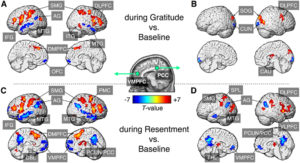Improve Mental Illness with Yoga
By John M. de Castro, Ph.D.
“for the general person, yoga greatly enhances mental health: mood, sense of self, motivation, sense of inner direction and purpose, as well as physical health—and physical health is so important for mental health.“– Eleanor Criswell
Yoga is a complex of practices including postures, movements, breathing practices and meditation. Although its benefits have been touted for centuries, it is only recently that scientific study was verified these benefits. Yoga practice has been repeatedly demonstrated in research studies to be beneficial for the psychological and physical health of the practitioners. It appears to be helpful for both healthy individuals and those suffering from physical and mental health issues.
In today’s Research News article “The Efficacy of Body-Oriented Yoga in Mental Disorders: A Systematic Review and Meta-Analysis.” (See summary below or view the full text of the study at: https://www.ncbi.nlm.nih.gov/pmc/articles/PMC5400032/ ),
Klatte and colleagues review, summarize, and perform a meta-analysis of the published research literature on effects of yoga practice on a variety of mental health problems. They focused on randomized controlled studies with adults suffering from psychiatric problems. They identified 25 published studies that met their criteria, including treatment of depression, schizophrenia, dependency, post-traumatic Stress Disorder (PTSD), and other mental illnesses.
They found that yoga practice produced, on the whole, large and significant improvements in the symptoms of the mental illnesses even in comparison to active control groups such as attention training and exercise. The beneficial effects of yoga practice were comparable to those produced by psychotherapy. But, the combination of yoga practice with psychotherapy produced even greater effects.
These are exciting and compelling findings that yoga practice is an effective treatment for mental illness on a par with individual psychotherapy. But, yoga practice has the advantage of being relatively inexpensive, can be practiced at home or in groups, and after a few weeks of instruction can be carried on without a therapist present. In addition, it can supplement traditional psychotherapy potentiating its effectiveness.
It would appear that the exercise component of yoga practice is not essential for its effectiveness as exercise only control groups show benefits but significantly less than the yoga practice groups. This suggests that the improvement of mindfulness that occurs in yoga practice has an additional beneficial role to play in treating mental illness. The combination of exercise with mindfulness training that occur with yoga practice appears to be particularly effective in treating mental illnesses. These results suggest that yoga practice is safe and effective and should applied either as a stand-alone treatment or be combined with more traditional treatments.
So, improve mental illness with yoga.
“It will come as no surprise that the various forms of yoga have long been acknowledged as allies in mastering the mind and coping with stress. Science is Increasingly validating those claims, especially for depression, schizophrenia, anxiety, PTSD (post-traumatic stress disorder), and ADHD (attention deficit hyperactivity disorder).” – Mental Health America
CMCS – Center for Mindfulness and Contemplative Studies
This and other Contemplative Studies posts are also available on Google+ https://plus.google.com/106784388191201299496/posts and on Twitter @MindfulResearch
Study Summary
Klatte, R., Pabst, S., Beelmann, A., & Rosendahl, J. (2016). The Efficacy of Body-Oriented Yoga in Mental Disorders: A Systematic Review and Meta-Analysis. Deutsches Ärzteblatt International, 113(12), 195–202. http://doi.org/10.3238/arztebl.2016.0195
Abstract
Background
The efficacy of body-oriented yoga in the treatment of mental disorders has been investigated in numerous studies. This article is a systematic review and meta-analysis of the relevant publications.
Methods
All studies in which the efficacy of hatha-yoga, i.e., body-oriented yoga with asanas and pranayama, was studied in adult patients suffering from a mental disorder (as diagnosed by ICD or DSM criteria) were included in the analysis. The primary endpoint was disorder-specific symptom severity. The publications were identified by a systematic search in the PubMed, Web of Science, PsycINFO and ProQuest databases, supplemented by a search with the Google Scholar search engine and a manual search in the reference lists of meta-analyses and primary studies, as well as in specialized journals.
Results
25 studies with a total of 1339 patients were included in the analysis. A large and significant effect of yoga was seen with respect to the primary endpoint (symptom severity) (Hedges’ g = 0.91; 95% confidence interval [0.55; 1.28]; number needed to treat [NNT]: 2.03), with substantial heterogeneity (I2 = 69.8%) compared to untreated control groups. Small but significant effects of yoga were also seen in comparison with attention control (g = 0.39; [0.04; 0.73]; NNT: 4.55) and physical exercise (g = 0.30; [0.01; 0.59]; NNT: 5.75); no difference in efficacy was found between yoga and standard psychotherapy (g = 0.08; [-0.24; 0,40]; NNT: 21.89). In view of the relatively high risk of bias, these findings should be interpreted with caution.
Conclusion
Body-oriented yoga with asanas and pranayama as central components is a promising complementary treatment for mental disorders and should be investigated in further high-quality studies.









